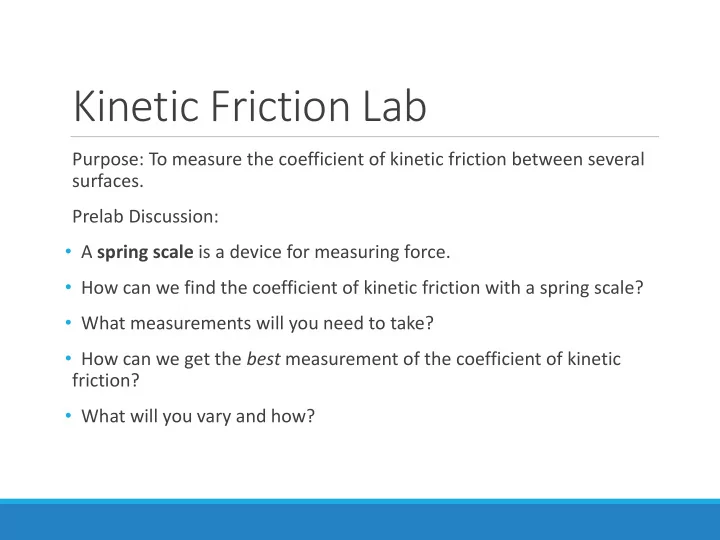

Kinetic Friction Lab Purpose: To measure the coefficient of kinetic friction between several surfaces. Prelab Discussion: • A spring scale is a device for measuring force. • How can we find the coefficient of kinetic friction with a spring scale? • What measurements will you need to take? • How can we get the best measurement of the coefficient of kinetic friction? • What will you vary and how?
Kinetic Friction Lab Notes on the Procedure • The spring scale needs to be zeroed – use the small white nob on the end of the scale. • Be careful with the scales – don’t pull too hard or they will break. • Take measurements for at least 5 different measurements (different normal forces) for 3 different surfaces. • Please use descriptive names for your three surfaces ( NOT surface 1, surface 2, etc.)
Kinetic Friction Lab - Analysis • Be sure that your data tables include both your original measurements and your calculated values. (e.g. weight from mass) • You should have three graphs – one for each surface. What is the shape of each graph? • Be sure to properly label your graphs • Don’t forget your units • In your column headers • On your graph axes • On both the slope and y-intercept of your equations for the best-fit line
Kinetic Friction Lab - Discussion • What is your mathematical model for the relationship between the normal force and the force of kinetic friction? • What is the coefficient of kinetic friction ( m k ) for each of the three surfaces? • Which surface has the highest m k ? Which has the lowest? Does this make sense?
Recommend
More recommend